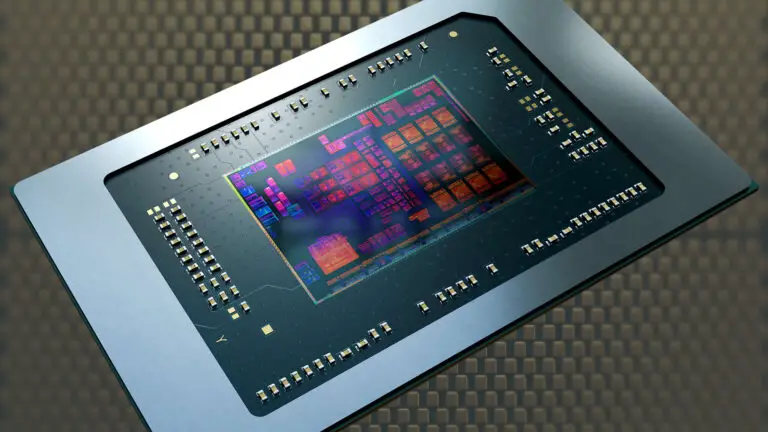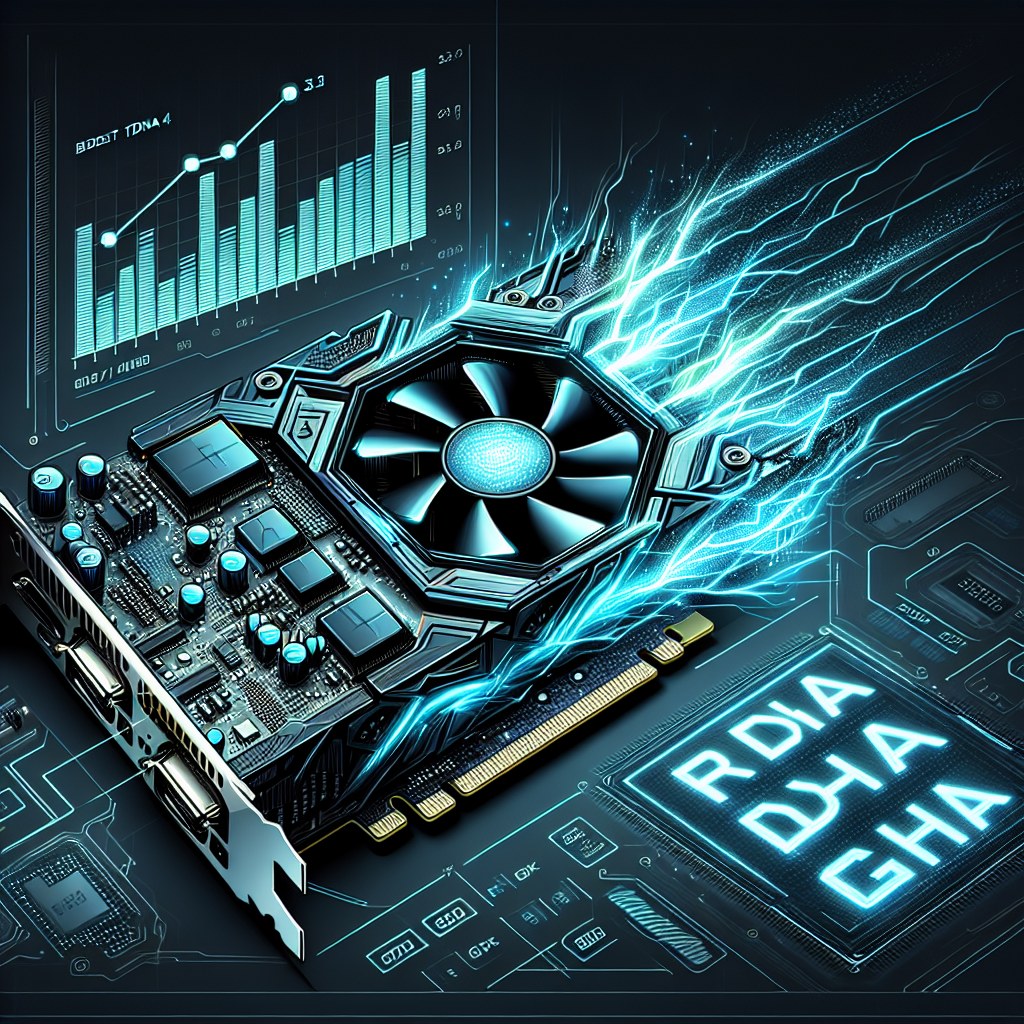Rumors of AMD’s RDNA 4 Graphics Chips
The tech community is abuzz with the latest rumor that AMD’s upcoming RDNA 4 graphics chips could boast clock speeds significantly higher than their predecessors. The speculation suggests that the top-tier models of these next-generation GPUs might reach boost speeds of up to 3.3GHz, marking a substantial 20% increase over the current RDNA 3 chips. While the source of these rumors doesn’t have a spotless track record for accuracy, the possibility of such performance gains has become a hot topic for discussion among PC enthusiasts and gamers alike.

Examining the RDNA 4 GPU Rumor
The circulating claims about the RDNA 4 GPU have caught the attention of the tech world, with the suggestion that these chips could be boosting between 3.0 and 3.3GHz. This represents a significant leap from the Radeon RX 7600 XT, which has a boost clock of 2.755GHz. The potential for such high clock speeds is partly attributed to AMD’s reported use of TSMC’s N4P process node for GPU fabrication, a technology already employed in the production of chips like the Ryzen 7 8700G.
| GPU Model | Boost Clock Speed |
|---|---|
| Radeon RX 7600 XT | 2.755GHz |
| RDNA 4 (Rumored) | 3.0 – 3.3GHz |
The use of the N4P process node is a key factor in this performance boost, as it has been shown to enable higher clock speeds with manageable power consumption and heat generation. If these rumors hold true, the next series of Radeon graphics cards could offer a significant performance advantage over the current offerings.
Technical Analysis of the Radeon 780M
The Radeon 780M has demonstrated impressive technical capabilities, particularly in terms of overclocking potential and power consumption. This small GPU, which is integrated into the Ryzen 7 8700G processor, has a base clock speed of 2.9GHz. However, with overclocking, one enthusiast was able to push the GPU to a remarkable 3.1GHz, which is 200MHz above the stock value.
- Base Clock Speed: 2.9GHz
- Overclocked Speed: 3.1GHz
- Standard Power Consumption: 50W
- Overclocked Power Consumption: Up to 83W, peaking at 153W for optimal graphics performance
- Compute Units: 12
- Shaders: 768
The ability to overclock the Radeon 780M to such extents, however, comes with a significant increase in power demand. The standard power consumption of 50W can almost triple when pushing the GPU to its limits. This showcases the potential trade-offs between performance and power efficiency in GPU design.
Implications for Larger RDNA 4 Chips
Achieving higher clock speeds in larger RDNA 4 chips presents a set of challenges that differ from those encountered with smaller GPUs like the Radeon 780M. The rumored RDNA 4 chip is expected to be much larger, with an estimated die area of 300 to 350 square millimeters, which is at least 47% bigger than the GPU in the RX 7600 XT. This increase in size could potentially impact the thermal and power management capabilities of the chip.
Historically, AMD’s presentation slides for the RDNA 3 architecture indicated an architectural design capable of exceeding 3GHz. However, no commercial release has yet achieved this benchmark without significant overclocking and power consumption. The leap to a 3.3GHz clock speed in a larger RDNA 4 chip would require not only advancements in the manufacturing process but also innovations in cooling and power efficiency.
The implications of these advancements are substantial. If AMD can successfully manage the heat and power requirements of these larger, faster chips, it could set a new standard for high-performance GPUs. However, the practicality of such speeds in consumer-grade products remains to be seen, as the balance between performance, power consumption, and heat generation is a delicate one.
The Potential of RDNA 4
The prospect of RDNA 4 GPUs boosting past 3GHz is an exciting one, with the potential to significantly enhance the performance of AMD’s graphics cards. The superior process node, such as TSMC’s N4P, is expected to play a crucial role in maintaining manageable levels of power consumption and heat, even with the increased clock speeds.
If AMD can deliver on these rumored clock speeds, the RDNA 4 series could offer substantial performance improvements. For instance, a GPU with the same number of shaders as current models but with a 20% higher clock speed could deliver up to 20% more performance, assuming all other factors remain constant.
However, the benefits of higher clock speeds extend beyond raw performance. Efficient power usage and effective heat dissipation are critical for the longevity and reliability of the GPU. AMD’s advancements in these areas could lead to GPUs that not only perform better but also run cooler and consume less power, making them more appealing to a broader range of consumers.
The potential of RDNA 4 GPUs to exceed 3GHz while maintaining efficiency would be a significant achievement in the graphics card market, setting a new benchmark for competitors and enthusiasts alike.
The Competitive GPU Market
The GPU market is highly competitive, with major players like Intel and Nvidia constantly innovating to capture market share. Intel’s upcoming Battlemage architecture and Nvidia’s anticipated Blackwell release are set to provide stiff competition for AMD’s RDNA 4. These releases underscore the need for AMD to not only push the envelope in terms of clock speeds but also to offer a compelling feature set that can stand out in the crowded market.
Features such as advanced ray tracing capabilities, AI-based upscaling technologies like DLSS Super Resolution, and specialized units for BVH traversals could be crucial for AMD to differentiate its products. The RDNA 4 architecture, if it includes such features, could potentially offer a well-rounded and powerful GPU option for consumers.
Moreover, the presence of strong competition from both AMD and Intel is essential to address the rising costs of desktop graphics cards. A competitive market could lead to more innovation and better pricing for consumers, which is especially important in a time when the cost of PC components is a significant consideration for many.
While the prospect of a 3.3GHz Radeon GPU is intriguing, the broader implications for the market are what will ultimately determine the success of AMD’s RDNA 4 series. A more capable, all-around GPU could be just what the market needs to spur further innovation and competition.
Expectations for RDNA 4 and Its Market Impact
As the tech community anticipates the arrival of AMD’s RDNA 4 series, expectations are high for what these GPUs could bring to the table. The potential for clock speeds exceeding 3GHz is tantalizing for gamers and professionals alike, promising a new level of performance that could reshape the graphics card landscape.
However, the true measure of RDNA 4’s impact will be seen in how it compares with the competition’s offerings and whether it can deliver a comprehensive feature set that goes beyond raw speed. Innovations in ray tracing, upscaling technology, and power efficiency will be key factors in determining the success of AMD’s next-generation GPUs.
The GPU market is on the cusp of a new era, and RDNA 4 could be at the forefront of this shift. Whether it will lead to more competitive pricing and technological advancements remains to be seen, but the anticipation is certainly setting the stage for an exciting future in PC gaming and graphics performance.

